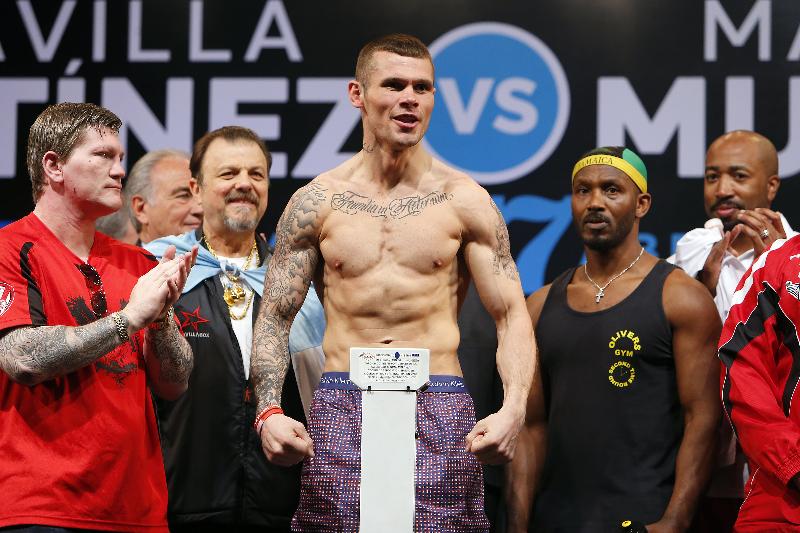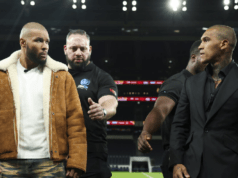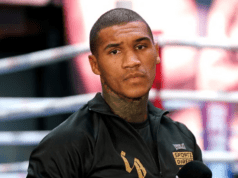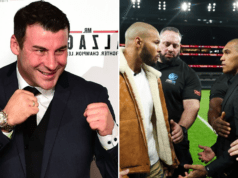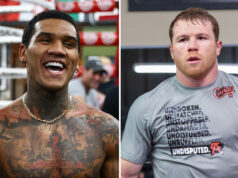Gennady Golovkin makes short work of his opponents. Early endings have become synonymous with the Kazakh like night and day, bread and butter. Golovkin and knockouts are inextricably linked.
This weekend, Martin Murray (29-1-1, 12 KOs) will fight Golovkin (31-0, 28 KOs) in Monte Carlo. In doing so, he will face a race against the clock, a battle to stay in the game long enough to at least hear the final bell, and perhaps have his hand raised aloft in decision victory.
Utopian as that might sound, Murray is a solid middleweight contender, a well-proven and versatile boxer, and he may just have a chance at springing what would likely go onto be the Upset of the Year. It may be difficult to envisage, but there is a case for Murray in this fight. Here it is.
Size matters
Too much emphasis is often placed on the sheer bulk of a fighter before a bout. The size of one man can give some a false sense of prescience, believing physique to be the only trait of importance and ignoring the more important aspects of the sweet science, such as technique.
Nonetheless, it is at least worth pointing out that Murray holds an advantage over Golovkin in both height and reach, and those advantages are significant enough not to ignore. One truthful boxing idiom states that ‘a good big man always beats a good small man’, and although Murray may lack in other departments – namely power and footwork – compared to Golovkin, he can marry his physical traits with other specific qualities as part of his strategy.
The importance of the jab and a high guard
Murray’s jab is a stiff one. It’s arguably his best punch, and he tends to throw it with regularity. Golovkin has a good chin, judging from what we have seen of him thus far, but he can be perturbed by a consistent, strong jab. Gabriel Rosado was able to survive into the second half of his fight with Golovkin thanks to this in large part to this particular shot. Murray should take heed of this and combine his height and reach with a frequent jab to offset GGG.
Murray can also learn a valuable lesson from Curtis Stevens who, like Rosado, made it past the halfway stage in his fight with Golovkin. Stevens’ “success” was predicated on a high guard and a tucked chin, both things Murray incorporates in his boxing style anyway.
If the Englishman can remain focused, utilize the jab and keep a high guard, he could distract and perhaps frustrate Golovkin. If this continues as the fight goes on, then like Rosado and Stevens, he’ll make it into the second half.
It’s a marathon, not a sprint
In the face of Golovkin’s heavy-fisted flurries and mentally tiresome pressuring, it is understandable why some fighters fade quickly. With such evident danger so tangibly close, a fight with Golovkin is a battle of the mind as much as everything else.
The first three rounds of a fight with Golovkin have been known to destroy any confidence earned through training camp and as such, the correct mentality is of critical importance if Murray is to make it out of the early stages this weekend.
Murray is used to going the twelve-round distance, having done so on four occasions throughout his career. Granted, in none of those fights did he face the pressure and power of Golovkin, but he has met esteemed opposition. Murray traveled to Germany and Argentina to compete with Felix Sturm and Sergio Martinez, respectively, over the distance.
If Murray intends to win this fight it is likely he will have to go the distance. Should he survive the early onslaught, make it past the halfway point and get a couple of early rounds in the bag, his confidence will skyrocket and so will his chances of success.


